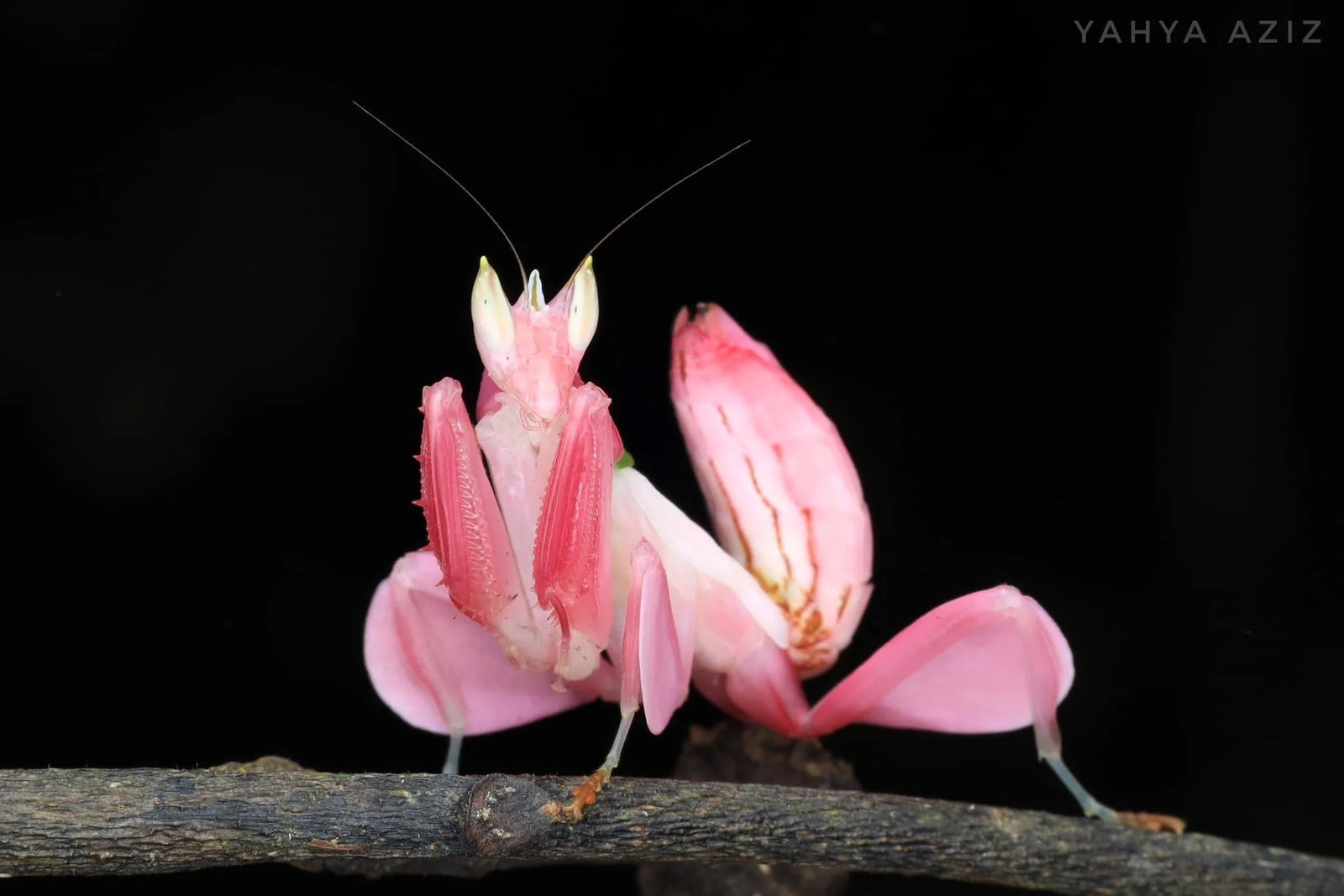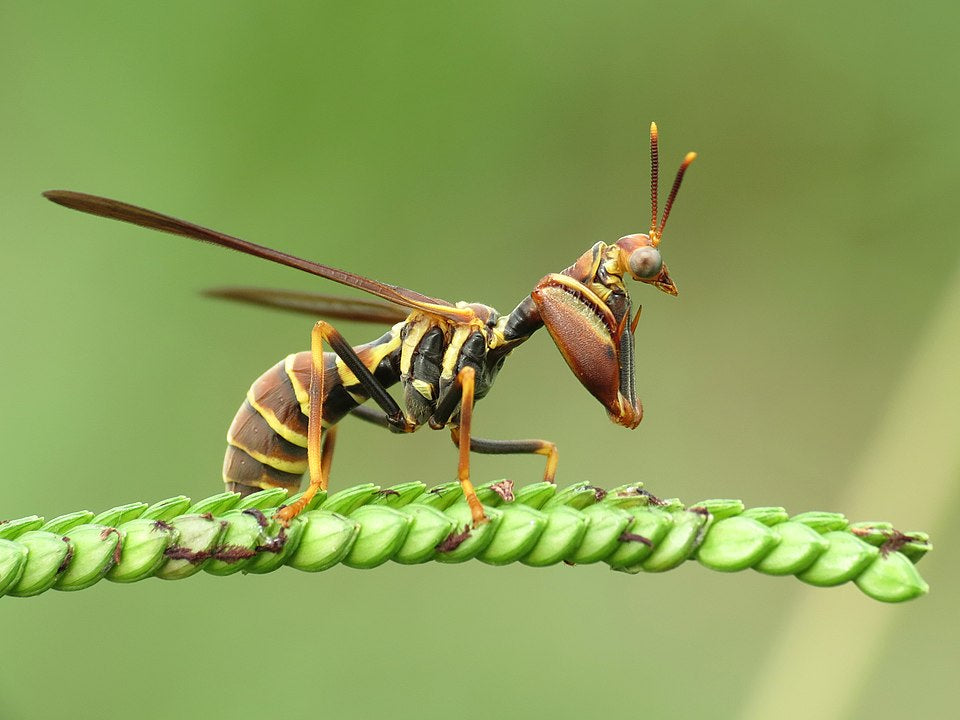Menu
-
- Home
- Contact
- Search
-
Shop
- Live Feeder Insects
-
Supplies
- Habitats
- Feeders
- Feeders and Microfauna Breeding Supplies
- Bioactive Kits
- Bioactive Supplies
- Containers
- Insect Culture Cups
- Insect Culturing Cups and Lids
- Classroom Projects
- Live Air Plants bioactive
- Substrates
- Lighting and Heating
- Cages, Habitats, Bug Boxes, Vivariums, Insectariums
- Bark
- Shipping supplies, Heat packs, cold packs, containers
- Bio-Active
- Plants
- Mantis Gallery
- Usmantis Reviews
- Praying Mantis
- Mantis
- Praying Mantis eggs ootheca for pest control
- BioActive Supplies
- Beneficial Insects
- Help Videos
- Top 5 Praying mantis as pets,
- Blog
-
Shop By Family
- Praying Mantis
- Care Sheets
- Track Order
- Live Feeder Insects
- Wholesale prices for bulk orders
- FAQ
- Galleries of Mantis Videos
-
- Home
- Search
- About us
- Shipping
- Refund Policy
- Track Orders
- Contact us
- Blog
- Beneficial Insects
- Sitemap
- Reviews
-
Film production resources
- Wholesale
- FAQ
- Login
-
English

Praying Mantis Care Lifespan, Growth and Molting Mis-molting
December 06, 2021 3 min read
Growth- and Lifespan Growth- and Lifespan depends on temperature and the amount of feed. A cooler climate leads to a slower development and a longer lifespan of the nymphs, as well as a lack of feed. Sometimes a further larva state is interposed if the lack of feed is intense. Thus the growth span can be retarded strongly. Therefore you can retard the growth of male nymphs, which often need 1- 2 molts less than females.
Growth The larva-states are mentioned as "Lx", the "x" stands for the number of the actual molting-state. At the hatching the nymphs are named as L1 (until yet no molting). Shortly after the hatch, the nymphs molt for the first time, so they are "L2". Thus a freshly hatched "ready" nymph is named as "L2". Every molting increases the number. So a "L5"-nymph has molted 4 times.
Mantids have a compact chitin-carapace, the exoskeleton which can not grow. Thus mantids have to molt to grow. The first molting occurs at the hatching, the last before the sexual maturity. Between those several molts are necessary, during which the larva grows bit by bit.
The molting-procedure is always the same. Just the last molting to the imago differs. All mantids molt headfirst, exceptional some rare species like Eremiaphila sp.
The molt or 'morph' is triggered by hormones. The mantid stops eating, (sometimes days) before. Shortly before, it search's for a place to hang headfirst, like a perch or the top of the terrarium. The molting-process start with "pumping" the abdomen, air is pressed into the body and the old chitin-carapace is "bursts open" at the back. This process can take several hours or even day's, the mantid slips out of it. At first the cervix and head, then the legs and the arms. At last the abdomen follows, though 1/6 of the abdomen remains in the old chitin. This process takes about half an hour.
New and soft pliant chitin-carapace has to harden, after hemolymph and air expands it completely. The mantid remains with the end of the abdomen in her old carapace, sometimes for hours. When the legs have hardened enough, the mantid pulls itself out of the old skin and hardens at an adequate place. Sometimes this takes several days then, will it starts to eat.
The imaginal-molting is the same up to the point, when the mantid gets complete out of the old skin. Then it searches for a vertical area. Such an area is necessary to unfold the wings by gravitation and by pumping hemolymph into them. This procedure can take several hours.
A wonderful process, this metamorphosis to observe, missing limbs can even regenerate, though It is most important that the mantis is not disturbed while molting. Mis-molts can be deadly.
During the hardening the carapace and the wings fill with color.
Thus 3 important requirements result for the terrarium and its arrangements:
- areas where the mantids can hang headfirst are required, like mesh at the top of the terrarium or branches etc.
- these ones have to be free to the bottom so that there is enough space for the mantid, at least 2 times "length" of the mantid
- for the imaginal-molting a vertical area is needed, like leaves, vertical branches or a wall of cork
- a quiet and still place for the habitat to sit, away from loud vibration or music or high traffic area
Raise the humidity before an expected molt so to avoid getting stuck and mis-molting.
Mismolting is disappointing! If molt doesn't go smoothly, a mantis falls or gets stuck it will likely die or be deformed. Unfortunately it is more common than id like to think.
Leave a comment
Comments will be approved before showing up.
Also in Praying Mantis News! Join the conversation.

orchid mantis evolutionary research
June 06, 2025 2 min read
The orchid mantis (Hymenopus coronatus) transitions from black-and-red to pink-white coloration during development, a shift driven by the Redboy pigment transporter. This transition serves different ecological functions: red coloration helps hatchlings mimic stink bugs for predator avoidance, while the pink-white coloration of older nymphs provides floral camouflage for both predator avoidance and prey attraction. The Redboy transporter, upregulated by ecdysone, facilitates this shift by exporting red pigments in early stages and importing white pigments in later stages.
Evolutionary Basis:
Redboy's Role:
The Redboy transporter, a novel ABCG transporter, arose by gene family expansion and positive selection, specifically to handle the transition from red to white coloration, according to research on Nature.
Hormonal Regulation:
The hormone ecdysone regulates Redboy, ensuring the pigment transition happens at the appropriate developmental stage, according to research on ResearchGate.
Genetic Adaptation:
The evolutionary changes in Redboy have allowed orchid mantises to adapt their body color to different life stages and ecological niches.
Ecological Functions:
Aposematic Mimicry (Hatchlings):
The initial black-and-red coloration serves as a warning signal, mimicking the appearance of stink bugs, which are known to be distasteful or toxic to predators.
Camouflage (Older Nymphs):
The pink-white coloration provides floral camouflage, helping the mantis blend in with flowers and avoid detection by predators.
Prey Attraction:
The flower-like appearance also attracts unsuspecting prey, such as small insects, to their location, enhancing the mantis's hunting success.
In summary, the orchid mantis's body color transition is a fascinating example of ontogenetic camouflage and adaptive evolution, where the color changes throughout the mantis's life serve distinct ecological roles in where the color changes throughout the mantis's life serve distinct ecological roles in predator avoidance and prey attraction.
Read More

Mantis fly Mantispidae, very special insect
October 15, 2024 3 min read
Mantispidae, they don’t sting! 

Recent Articles
-
orchid mantis evolutionary research
June 06, 2025
-
New Yorker article 1955 Mantis Man
March 09, 2025
-
Mantis fly Mantispidae, very special insect
October 15, 2024
-
Do insects have feelings? Love or Hate? What’s your opinion
September 09, 2024
-
How Praying Mantises Hear: One ear
July 19, 2024
-
Identifying Domestic species
July 19, 2024
-
Invasive claims and irresponsible advice
April 13, 2024
-
Is it time for insect researchers to consider their subjects’ welfare?
April 08, 2024
-
My Awesome Summer by P. Mantis Children’s book
April 07, 2024
-
Toxodera
April 06, 2024
Categories
- animal husbandry
- best feeders
- best mantis for pest control
- breeding praying mantis
- buy praying mantis
- Cannabis
- crickets
- discussion
- dormitory pet
- Drosophila
- education
- egg
- entomology
- fertility
- flightless fruit flies
- Flower mantis
- Friendly Bugs For Cannabis
- fruit fly culture
- geometric morphometrics
- Ghost mantis
- happy experience with pets
- Hydei
- Hymenopodidae
- Hymenopus coronatus
- invasive
- keeping insects alive
- Lucky mantis
- Major League baseball Perez Kisses Lucky Mantis!
- make money
- mantis for dummies
- mantis ooth
- Mantodea
- melanogaster
- mimicry
- mismolt
- new species
- ooth
- ooth care
- ootheca
- P paradoxa
- pest
- Pest control
- pet nutrition
- praying mantis
- praying mantis care
- praying mantis for sale
- reptile feeders
- School project
- scientific research
- Sexing praying mantis
- Shipping
- signalling
- stem
- stenophylla
- Store news
- stress from shipping
- usmantis
- we buy mantis
Menu Title
This section doesn’t currently include any content. Add content to this section using the sidebar.
Subscribe
Sign up to get the latest on sales, new releases and more …
Invalid Password
Enter